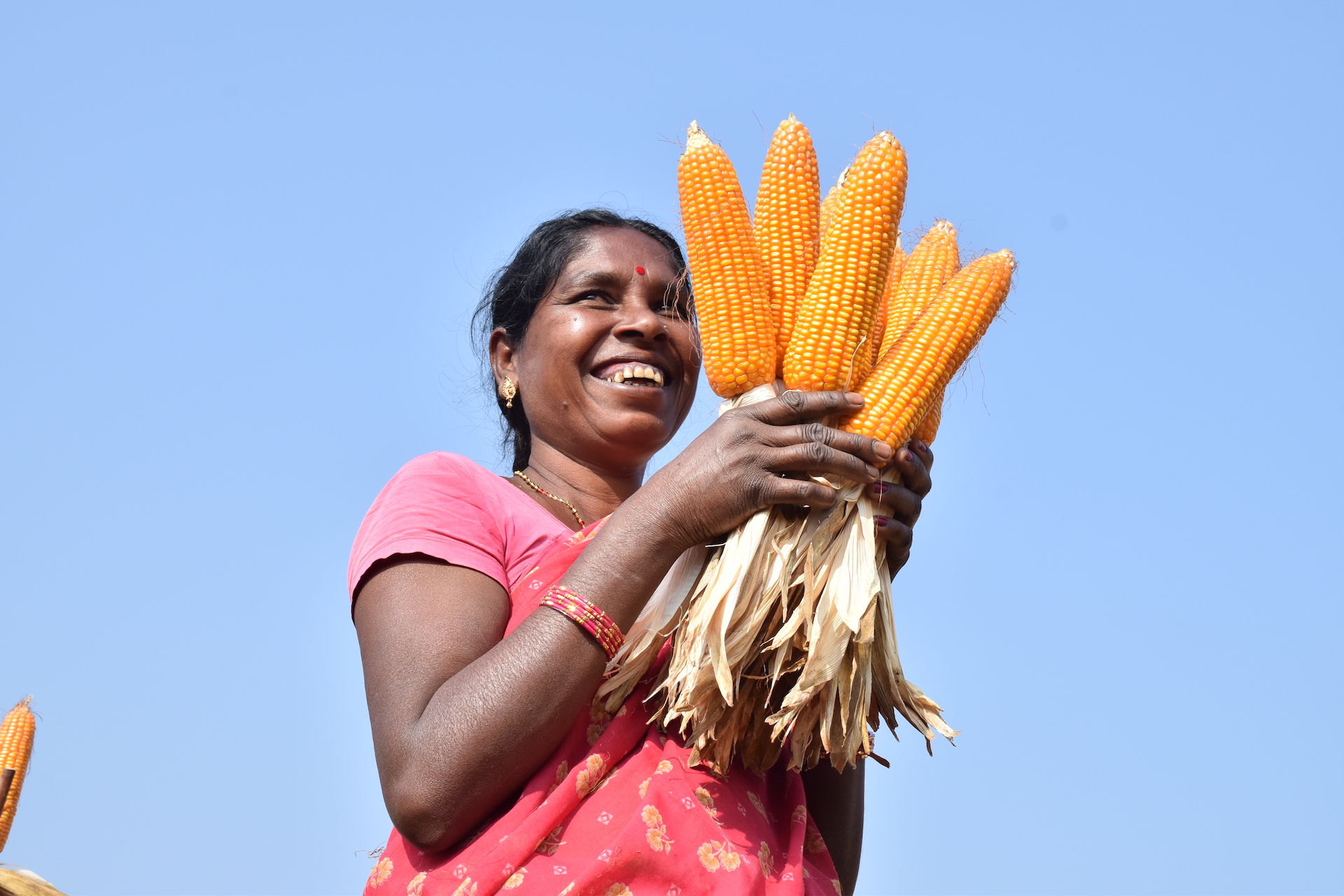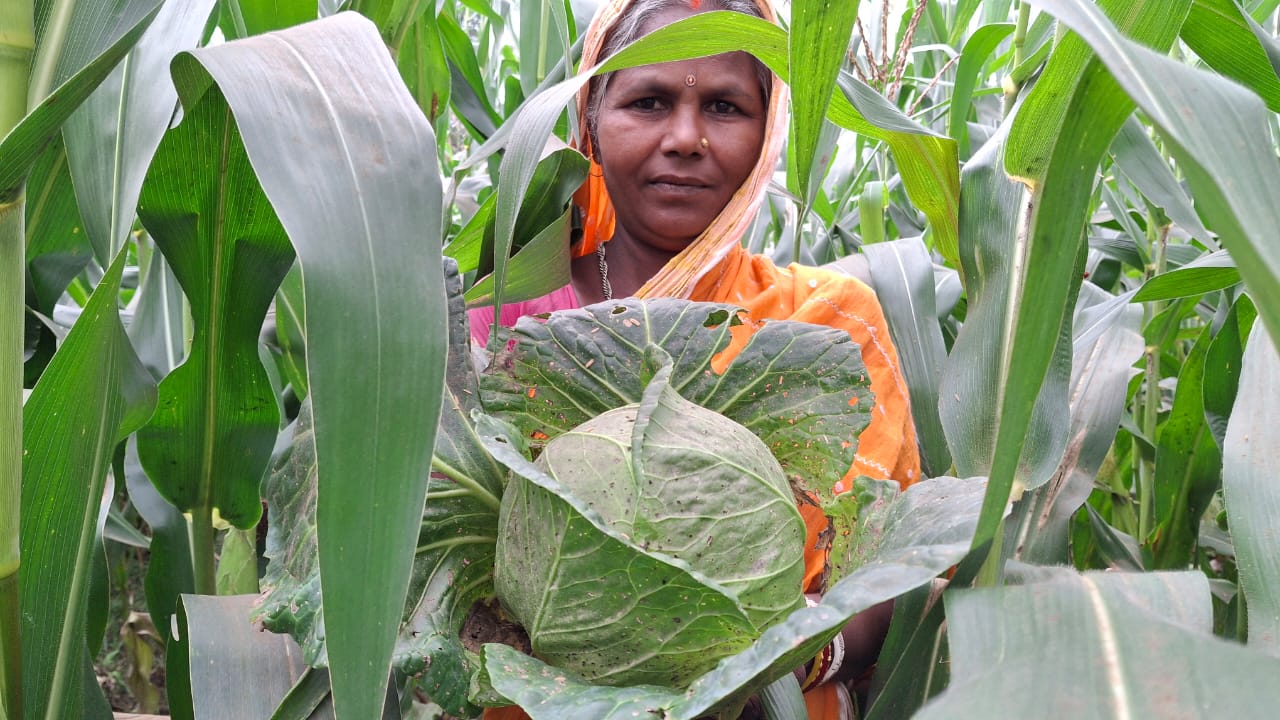On a cloudy monsoon afternoon in Alamgirpur Badhla village, Meerut, farmer Nimesh Kumar wades through his thriving sugarcane fields. Between the tall, green stalks, rows of groundnut plants spread like a rich carpet. Planted in early April, the groundnuts are ready for harvest. “They can’t stay in the soil any longer,” he remarks, pulling up a clump of pods.
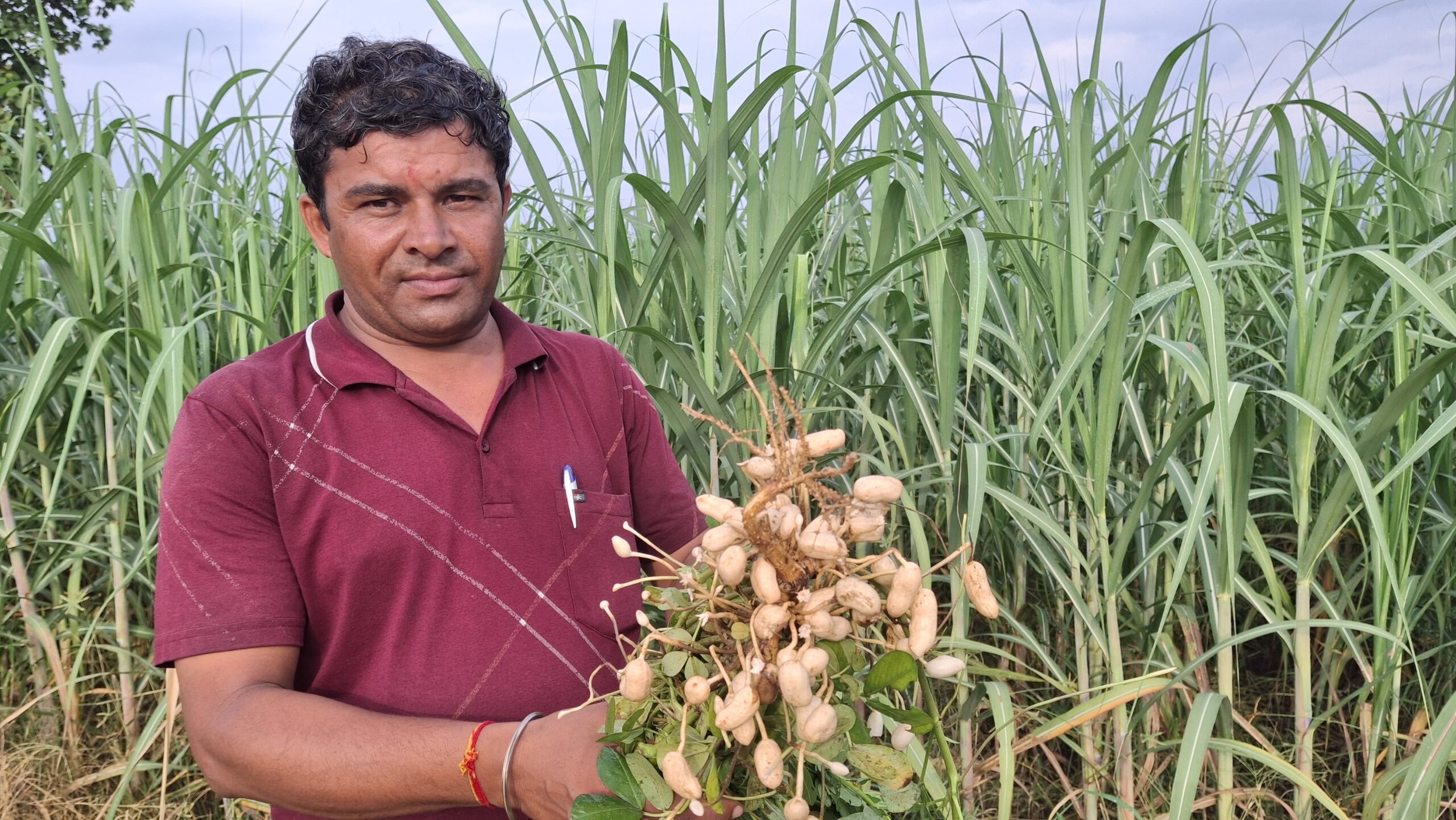
A progressive farmer, Nimesh was recognized in May at a district-level field event held under the nationwide Viksit Krishi Sankalp Abhiyan—a campaign to modernize Indian agriculture—attended by India’s Agriculture Minister, Shri Shivraj Singh Chouhan. Nimesh’s willingness to adopt innovative farming practices has earned him admiration and made him a role model within his community.
“I’m happy that I’ve inspired many farmers in the region,” he says, handing over a handful of freshly unearthed groundnuts. “Next year, the crop will be even better. This was our first attempt. There were a few trial-and-error moments, but both the sugarcane and groundnuts have done well. Next season, we’ll scale up, learn from these small mistakes, and aim for a bumper harvest.”
A Sugarcane-Dominated Landscape
Nimesh is among 50 farmers across four districts of western Uttar Pradesh—Meerut, Muzaffarnagar, Baghpat, and Hapur embracing additive intercropping by growing groundnut, fodder maize, vegetable–cowpea, and okra alongside their main sugarcane crop. This approach allows farmers to harvest a second crop without compromising sugarcane yields.
Western Uttar Pradesh is known for its dense sugarcane cultivation, which dominates the agricultural landscape. However, decades of rotating sugarcane-ratoon-wheat, without diversification or the inclusion of beneficial crops such as pulses and oilseeds, have led to declining soil fertility and reduced production diversity.
With India’s growing reliance on imported oilseeds, around 60% of India’s edible oil demand is met by imported oils. Meanwhile, the demand for oilseed and pulses continues to increase, placing further pressure on the national import bill.
To address this challenge, the government is promoting crop diversification through supportive policies and programs, such as the National Mission on Edible Oils–Oilseeds (NMEO-Oilseeds) for 2024–25 to 2030–31. However, expanding these crops at scale remains challenging, particularly in regions where long-standing preferences and economic considerations shape farmers’ choices.
According to Raghuveer Singh, Senior Scientist from the Indian Council of Agricultural Research’s Indian Institute of Farming Systems Research (ICAR–IIFSR), Modipuram, a practical and promising solution lies in integrating oilseeds into wide-row crops like sugarcane without compromising the main crop yield. He explains, “Paired-row sugarcane planting using the trench method–with 30 cm spacing within pairs and a minimum 120 cm beds for intercrops – has proven effective. It enables farmers to retain sugarcane as their primary cash crop while introducing vegetable crops, pulses and oilseeds into the system.”
A New Approach, Backed by Research
In 2023, CIMMYT launched the Intercropping Project, funded by the Australian Centre for International Agricultural Research (ACIAR), to enhance productivity, nutrition, farm incomes, and climate resilience through additive intercropping across in India, Bhutan, and Bangladesh.
In Uttar Pradesh, CIMMYT is collaborating with ICAR–IIFSR to pilot additive intercropping both on farmers’ fields and at the IIFSR research station, where sugarcane is tested intercropped with groundnut, vegetable cowpea, okra, and fodder maize in both the plant and ratoon sugarcane crops.
This marks the first time additive intercropping is being tested in ratoon sugarcane. To enable this, a mulcher was used to manage sugarcane trash after harvesting the plant crop and enable the establishment of the additive intercrops.
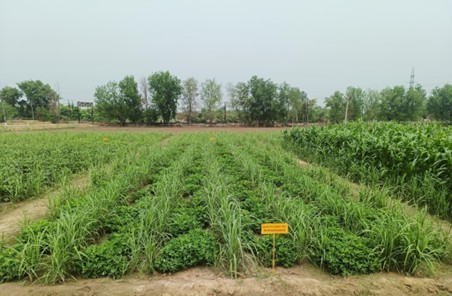
“Groundnut, in particular, has shown a synergistic effect,” says Dr Raghuveer Singh of the experiments. “It conserves soil moisture by creating a living mulch, suppresses weeds, and, being a leguminous crop, enriches soil nitrogen. We suspect the groundnut also works as a trap crop to reduce the disease and pest load on the main sugarcane crop. In our first season we observed that additive intercropping with groundnuts boosted sugarcane yields by 10–15% and overall system productivity by 30–35% in terms of sugarcane equivalent yield (SEY) relative to a sole sugarcane crop grown without additive intercropping”
A baseline survey (n=200) conducted by the project in Meerut and Muzaffarnagar revealed that 60–75% of sugarcane planting occurs between February and March. “Short-duration groundnut varieties (90–100 days) fit neatly into this window and can be harvested before the monsoon arrives,” explained Raghuveer
Early Adopters and Success in Farmer Fields
Encouraged by early on-station research results, the project expanded to farmer fields this spring. Fifty progressive farmers were trained to adopt the approach using modified planting geometry. Early field observations suggest that, with proper support, additive intercropping in sugarcane could scale across the region.
Ankit Kumar, a young farmer from Muzaffarnagar and creator of the “Yuva Kisan-Nayii Soch” (Youth Farmer – New Thinking) YouTube channel, is among the 50 pioneering farmers. Using his mobile phone, he shared information comparing his intercropped and sole sugarcane plots—highlighting his savings on irrigation, labor, and fertilizer costs, along with added income anticipated from groundnuts. He’s confident that groundnut intercropping will prove to be a win-win.
Landless and young farmers have often been discouraged from experimenting with alternative management practices, such as additive intercropping, by the cost of renting and managing land, however these early results suggest that additive intercropping sugarcane with groundnut, will prove to be an economically smart choice. The additional income from groundnut has the potential to offset land lease and cost of production expenses, effectively ensuring the sugarcane crop grown alongside generates pure profits.
Groundnut: A Crop for Diversification and Self-Sufficiency
The project team believes that sustained farmer engagement, clear demonstrations of benefits, and alignment with government initiatives promoting oilseeds and pulses could improve cropping systems and soil health in western Uttar Pradesh, currently dominated by the sugarcane monoculture.
“There is a lot of research work available on sugarcane intercropping in autumn (October) planting. However, with the introduction of the early-maturing variety such as Co-0238 —often referred to as ‘a wonder cane ‘, a shift towards spring/summer planting by farmers has taken place. Recent surveys indicate that less than 5% of the area is now under autumn planting. On the other hand, there is limited research on short duration intercrops suitable for Spring and summer season planting in this region. But with two years of data from ICAR-IIFSR trial fields and insights from 50 farmers’ fields, we’re building a strong evidence base for the long-term sustainability of legume-based additive intercropping in sugarcane,” notes Dr Alison Laing, CIMMYT scientist and the overall project leader.
As CIMMYT and ICAR–IIFSR continue their research, this focus on spring and summer systems with groundnut additive intercropping could play a crucial role in making agriculture in western Uttar Pradesh more resilient and future-ready, in line with the Indian government’s push for agronomic diversification and national food self-sufficiency.

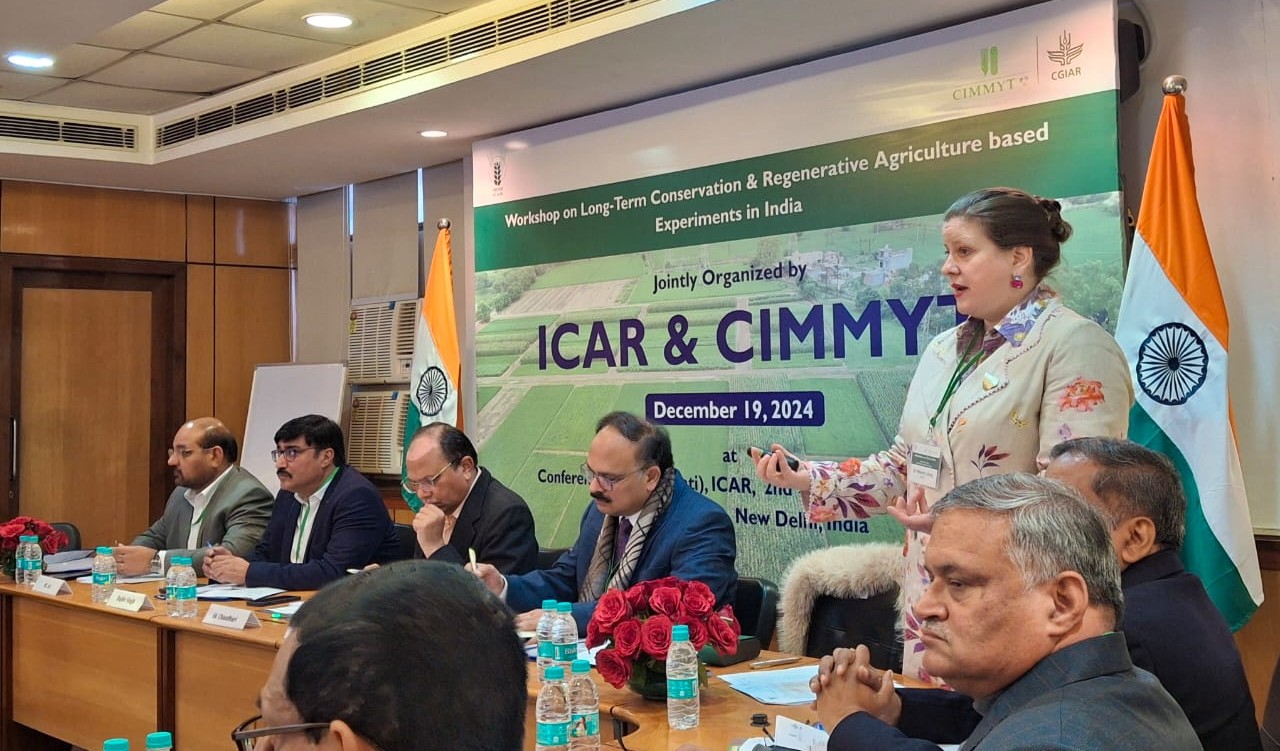
 Climate adaptation and mitigation
Climate adaptation and mitigation 